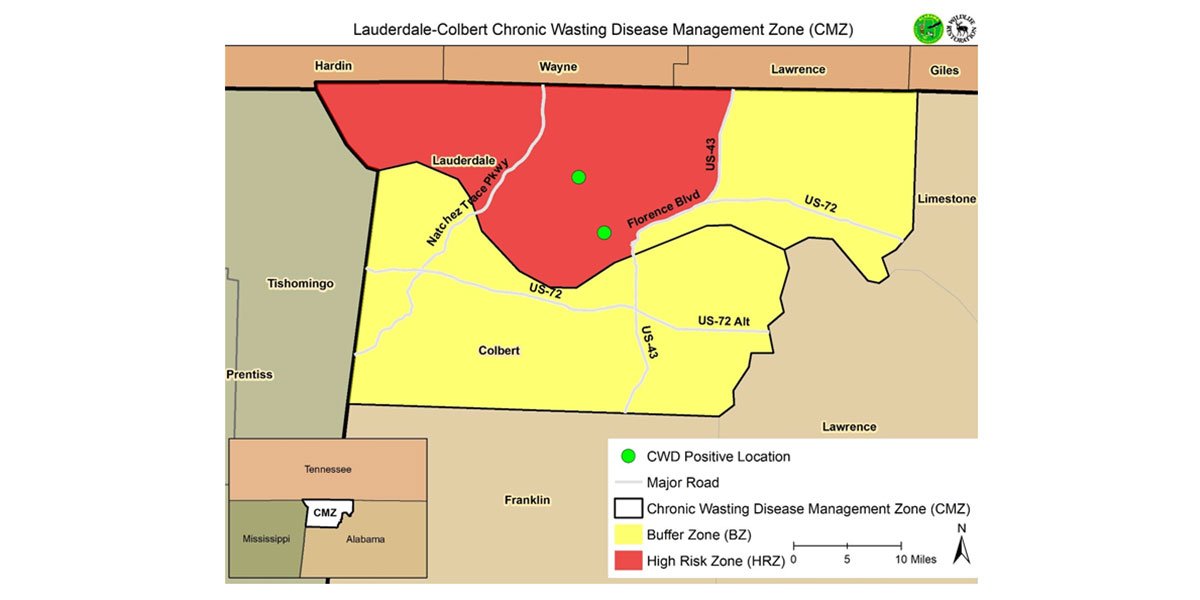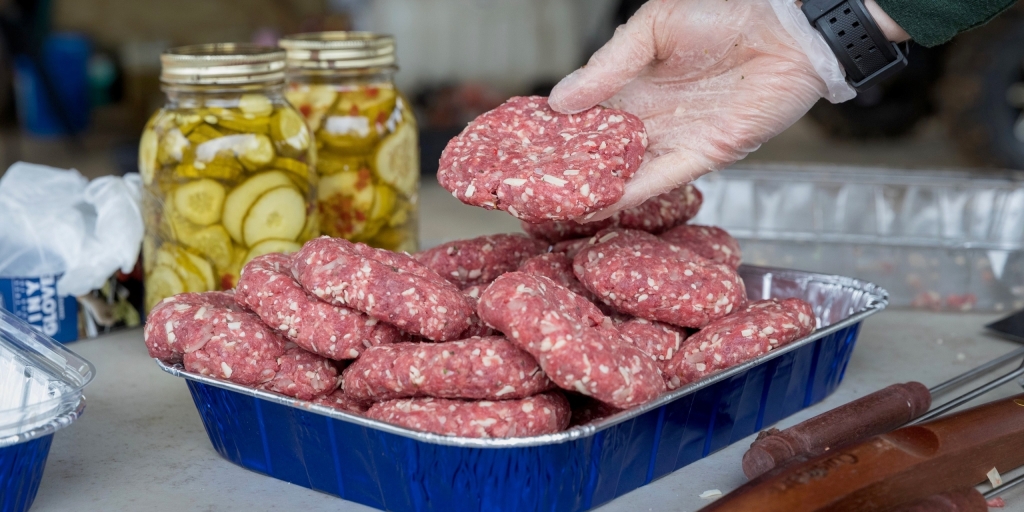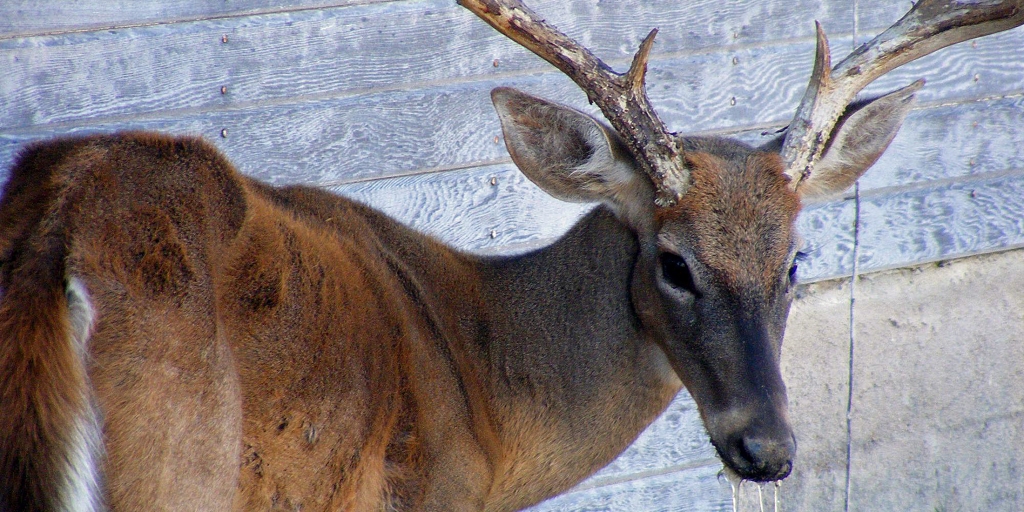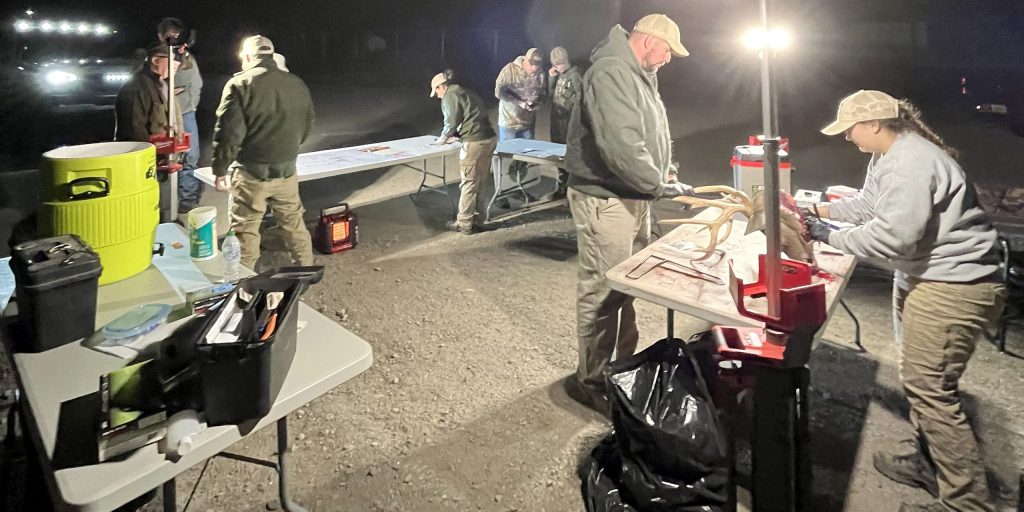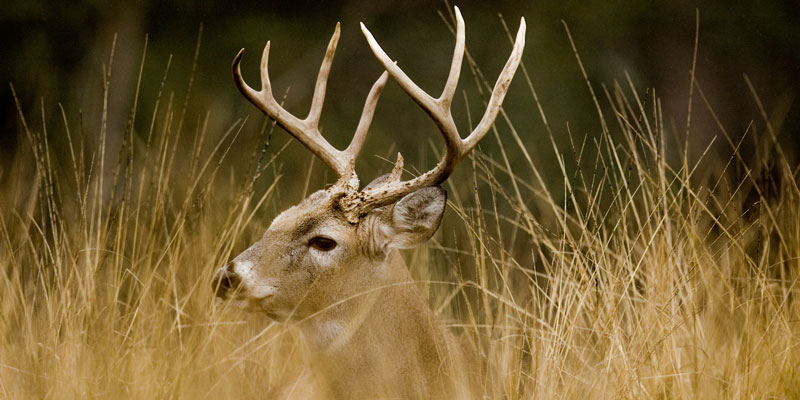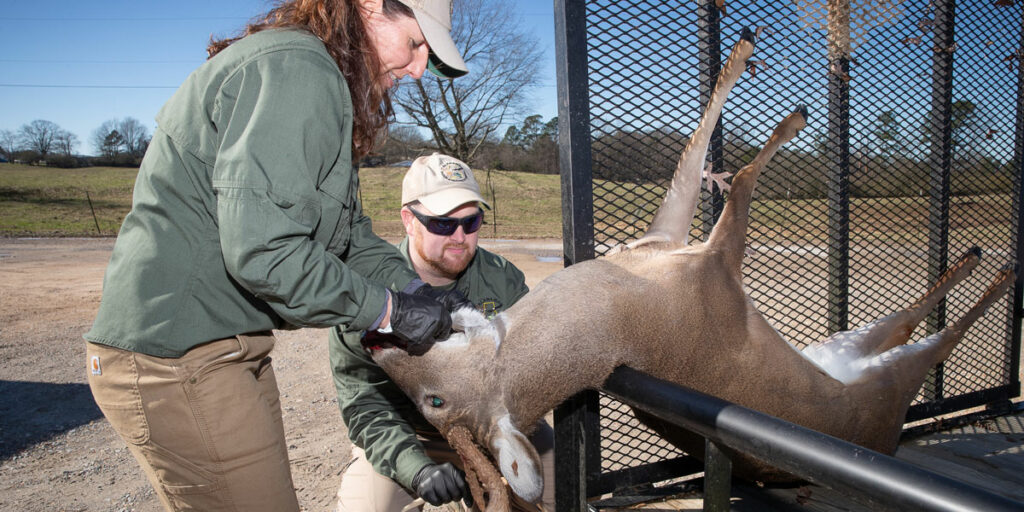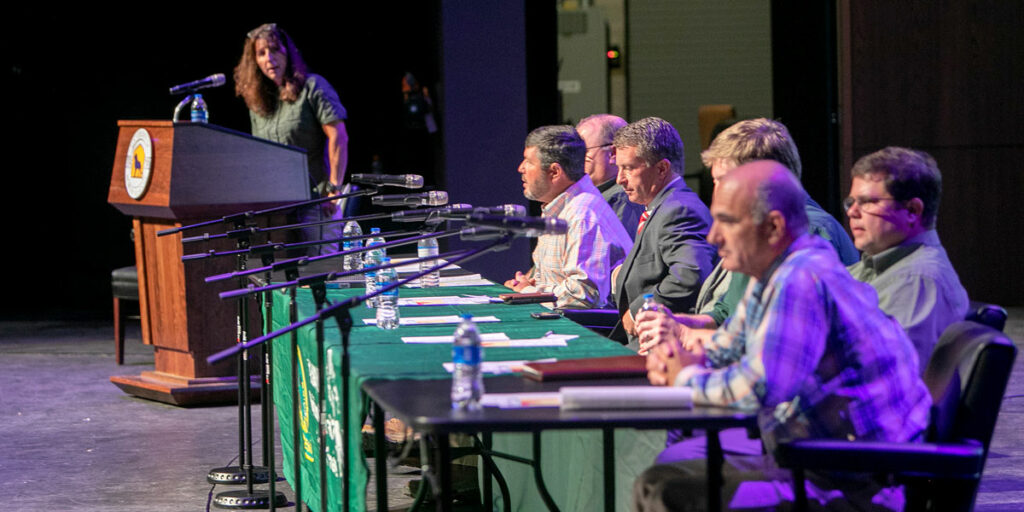Chuck Sykes, Director of the Alabama Department of Conservation and Natural Resources’ (ADCNR) Wildlife and Freshwater Fisheries (WFF) Division, confirmed that a second white-tailed deer in Lauderdale County in northwest Alabama has tested positive for chronic wasting disease (CWD) in a report to the Alabama Conservation Advisory Board (CAB) Saturday in Montgomery.
“Unfortunately, we knew it was going to happen,” Sykes said. “We prolonged it as long as possible by implementing proper regulations and educational programs to prevent artificial introduction of CWD. But we knew as close as it was in Mississippi and Tennessee that it was coming eventually.”
On January 7, 2022, when the first CWD-positive deer was confirmed in Alabama, Sykes said the initial action of the WFF’s Chronic Wasting Disease Strategic Surveillance and Response Plan was to establish a CWD Management Zone (CMZ) that was comprised of a High Risk Zone (HRZ) and a buffer zone (BZ). All daily and season bag limits were removed from that CMZ.
“We had 30 days left in deer season, basically, to acquire samples,” Sykes said. “We needed hunters out hunting and given all the opportunities they could to provide us samples. That’s why we removed the season and daily bag limits for that area. It was mandatory for deer harvested in the High Risk Zone to be tested for CWD. Hunters were encouraged to have all deer tested that came from the buffer zone. Of course, we had carcass transport restrictions on deer harvested within the CMZ. We were extremely pleased with the participation we got from the majority of hunters.”
A total of 966 CWD samples were tested from deer harvested within the CMZ during the 2021-22 Season. Of the 966 total samples within the CMZ, 847 samples were collected and tested after the initial confirmed positive CWD detection. In cooperation with the Alabama Department of Agriculture and Industries (ADAI), samples from within the CMZ (Lauderdale and Colbert counties) were prioritized for testing. One sample that tested non-negative by ADAI was forwarded to the National Veterinary Services Lab in Ames, Iowa, for additional testing. That lab confirmed positive detection for this sample from west-central Lauderdale County. All test results for the 966 CWD samples from within the CMZ have been received and no other positive samples were detected.
“We have a .005 prevalence rate,” Sykes said. “When Mississippi became positive in 2018, they found one deer. It took four years to find another (CWD positive) deer in that county. When Tennessee became positive in December 2018, they found one in one week, 10 the next and 50 the next week. It just exploded.
“Thankfully, with all our preventative measures, I think we’re more like the Mississippi model, where we have been looking in the right area for the past five years. We knew where it was going to come in, and fortunately our prevalency rates are extremely low. This is something we are never going to eradicate. We just need to understand it – the distribution and prevalence of it and we manage around it.”
Despite hunters’ concerns that the deer herd in the CMZ would be decimated by overhunting, Sykes said that simply was not the case.
“We took quite a bit of criticism when we removed the season and daily bag limits,” he said. “We were going to ‘kill them all.’ We were going to ‘destroy deer hunting in the CMZ.’ We were going to ‘starve people in the future because we were going to kill all the deer.’”
Sykes displayed a chart from Game Check harvest data that revealed hunters harvested 1,481 deer in the CMZ during the period of January 7 through February 10 of the 2020-2021 season. During that same time period of the 2021-2022 season, hunters harvested 1,707, an increase of 226 animals.
“We did not destroy the deer herd,” Sykes said. “We did not kill them all. There will be plenty there next year. If you look at the totals, for the entire deer season, the harvest in the CMZ is down. So, everything is still fine.
“What I want the Board and members of the public to take away from this is this did not take us off-guard. Everything we did was not a knee-jerk reaction. We were prepared. We put a plan in place and it is working. We have an incredibly talented staff that has been working on this for more than a decade. We’ve worked with professionals from around the country who have been working with CWD for decades. We’re going to be fine. We’re going to manage through this. Things are just going to be a little bit different.”
One proposed difference for the 2022-2023 deer season is the entire CMZ will be moved into Zone A, which encompasses most of the northern half of the state, and will have the seasons and bag limits of Zone A.
Also, baiting and supplemental feeding will be suspended within in the CMZ. The only exceptions are feed in an active feral swine trap or bird feeders within 100 feet of a building or occupied dwelling.
Instead of requiring all deer harvested in the HRZ to be tested throughout the full season, WFF will set up specific time periods for the optimized collection of samples needed to monitor the deer herd. Dates and times will be posted on www.outdooralabama.com later this year.
Although CWD testing in the HRZ and BZ will be mandatory only during the set times, Sykes noted that WFF strongly recommends that all deer harvested within the CMZ be submitted for testing.
Conservation Commissioner Chris Blankenship applauded the efforts of the WFF staff in dealing with the CWD impacts.
“Our CWD response was very well done,” Commissioner Blankenship said. “We were prepared in the event that this ever happened. We had already developed and practiced the plan. Chuck, Amy Silvano, Keith Gauldin, Matt Weathers and Michael East and their staff have been on it. Rick Pate (ADAI Commissioner), Dr. (Tony) Frazier and the Department of Agriculture and Industries have provided great turnaround on the testing of almost 1,000 samples since early January. I also appreciate the cooperation of the legislators, hunters and landowners in that area.”
In other significant news announced at the CAB meeting, the Alabama Marine Resources Division (MRD) set the opening day of the private recreational red snapper season as the Friday (May 27) before the Memorial Day weekend. The season will be open from Friday through Monday of each week following the opener until the annual quota is met.
“We are working through some issues with NOAA (National Oceanic and Atmospheric Administration) that have the potential to decrease the red snapper quota in Alabama,” Commissioner Blankenship said. “Scott Bannon (MRD Director) and I were in D.C. last week, working with NOAA and our congressional delegation to mitigate potential impacts.”
MRD also reported a much-improved oyster harvest from Alabama waters. Oyster catchers went from 10,000 sacks in 2019 to 23,000 sacks in 2020 to 50,000 sacks in 2021.
Commissioner Blankenship also provided a report on the ADCNR’s four divisions.
He said Alabama State Parks had its highest gross revenue and profits in history. However, State Parks’ aging infrastructure needs repairs and upgrades that can be performed with additional funds that would be provided in a constitutional amendment on the May 24 ballot. The amendment would authorize $85 million in bonds for State Parks. Teaming with Forever Wild, State Parks added 1,650 acres adjacent to Oak Mountain State Park. In 2021, State Parks also purchased the property above the cave at Rickwood Caverns State Park.
Commissioner Blankenship said the State Lands Division will oversee 17 projects with $41 million in funds derived from GOMESA (Gulf of Mexico Energy Security Act).
He said that since Governor Kay Ivey took office, ADCNR and its partners have acquired more than 61,000 acres in Alabama for public access and preservation. Governor Ivey has also dedicated $2.7 million for boat ramps and access to accommodate larger fishing tournaments on Lake Mitchell, Lake Martin and Lake Jordan. ADCNR is focusing efforts on boating access including projects at Demopolis on the Tombigbee River and Selma on the Alabama River.
“This will have a long-term legacy impact,” Commissioner Blankenship said. “And we’re not done yet.”
David Rainer is an award-winning writer who has covered Alabama’s great outdoors for 25 years. The former outdoors editor at the Mobile Press-Register, he writes for Outdoor Alabama, the website of the Alabama Department of Conservation and Natural Resources.




